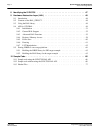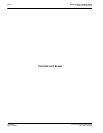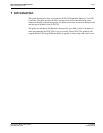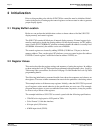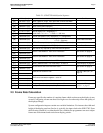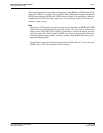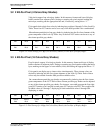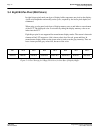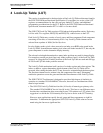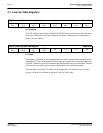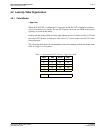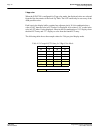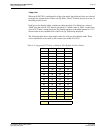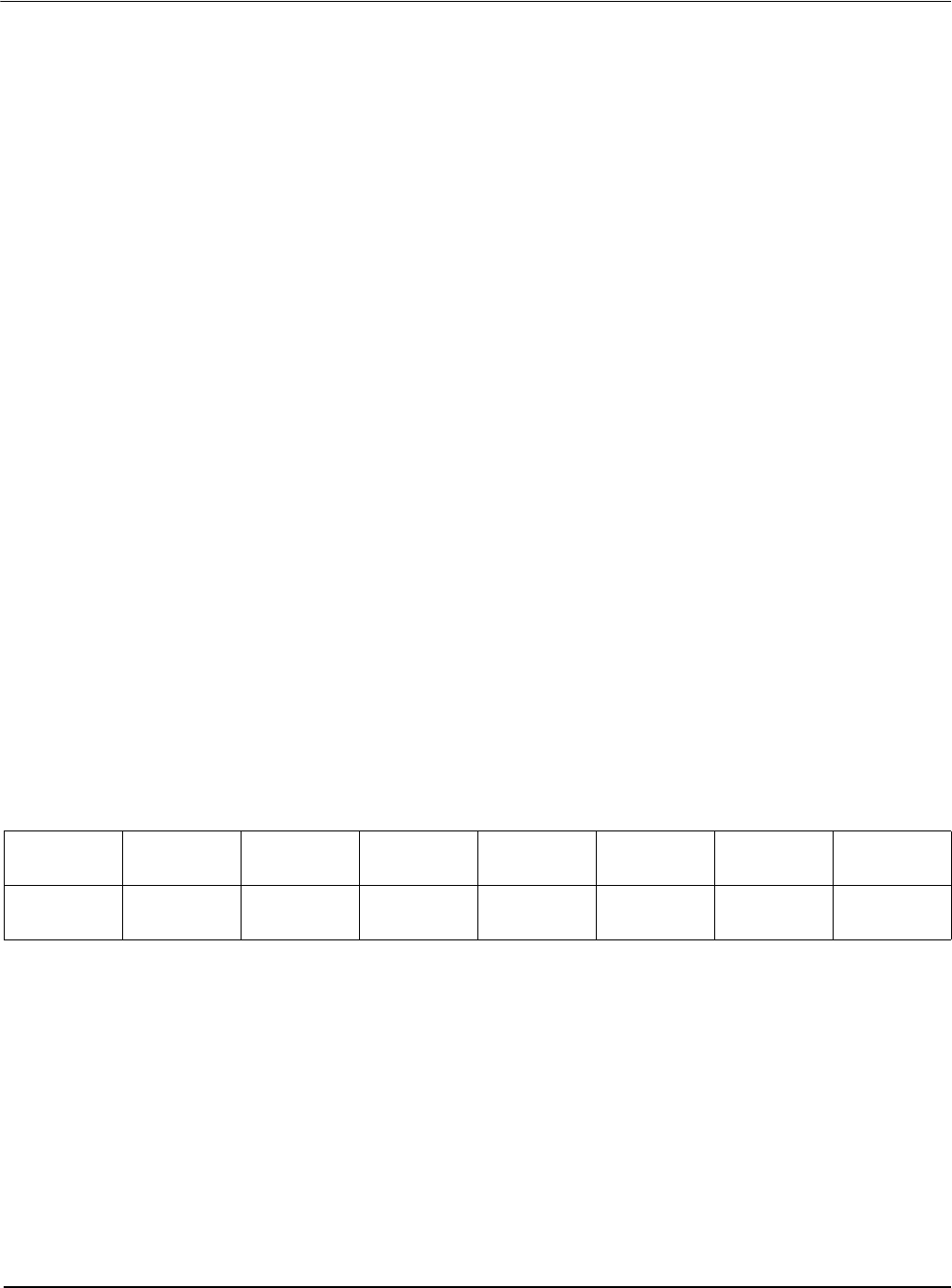
Page 12 Epson Research and Development
Vancouver Design Center
S1D13705 Programming Notes and Examples
X27A-G-002-03 Issue Date: 02/01/22
3 Memory Models
The S1D13705 is capable of operating at four different color depths. For each color depth
the data format is packed pixel. S1D13705 packed pixel modes can range from one byte
containing eight adjacent pixels (1-bpp) to one byte containing just one pixel (8-bpp).
Packed pixel data may be envisioned as a stream of pixels. In this stream, pixels are packed
in adjacent to each other. If a pixel requires four bits then it will be located in the four most
significant bits of a byte. The pixel to the immediate right on the display will occupy the
lower four bits of the same byte. The next two pixels to the immediate right are located in
the following byte, etc.
3.1 1 Bit-Per-Pixel (2 Colors/Gray Shades)
1-bit pixels support two color/gray shades. In this memory format each byte of display
buffer contains eight adjacent pixels. Setting or resetting any pixel requires reading the
entire byte, masking out appropriate bits and, if necessary, setting bits to “1”.
When using a color panel the two colors are derived by indexing into positions 0 and 1 of
the Look-Up Table. If the first two LUT elements are set to black (RGB = 0 0 0) and white
(RGB = F F F) then each “0” bit of display memory will display as a black pixel and each
“1” bit will display as a white pixel. The two LUT entries can be set to any desired colors,
for instance red and green or cyan and yellow.
For monochrome panels the two displayed gray shades are generated by indexing into the
first two elements of the green component of the Look-Up Table (LUT). Thus, by manip-
ulating the green LUT components we can set either of the two gray shades to any of sixteen
possible levels.
Figure 3-1: Pixel Storage for 1 Bpp (2 Colors/Gray Shades) in One Byte of Display Buffer
Bit 7 Bit 6 Bit 5 Bit 4 Bit 3 Bit 2 Bit 1 Bit 0
Pixel 0Pixel 1Pixel 2Pixel 3Pixel 4Pixel 5Pixel 6Pixel 7



